What the World Needs
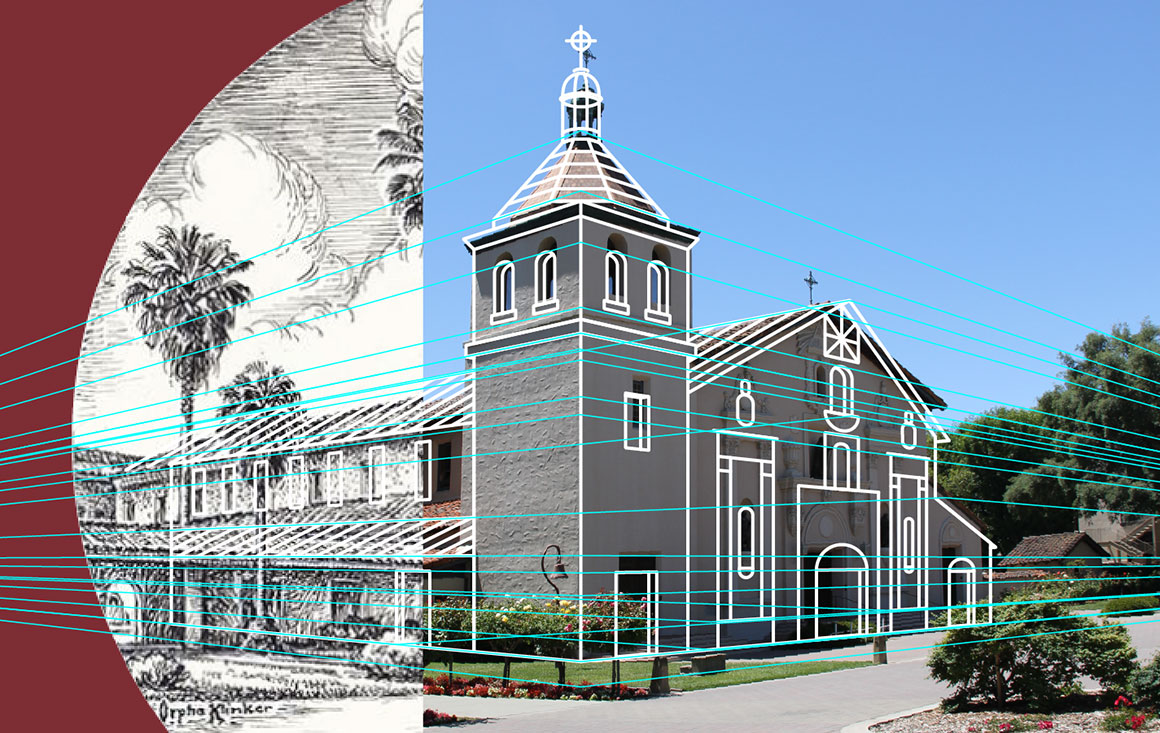
As Santa Clara University approaches its 175th anniversary, its impact has never been stronger.
Over the past decade, Santa Clara has emerged as one of the top universities in national rankings, celebrated the close of a $1 billion campaign, and developed a new strategic plan—Impact 2030—that aims to advance the common good and provide opportunity for all talented students, regardless of circumstance.
To capitalize on this momentum and prepare for the evolving higher education landscape, one year ago, President Julie Sullivan approved a brand review by University Marketing and Communications (UMC) to determine how well SCU communicated its mission, direction, and global impact.
“To differentiate Santa Clara in this competitive marketplace, drive enrollment marketing, and advance Impact 2030 priorities, it’s important to showcase the qualities that make us unique across our communications,” explains Lawrence Lokman, the new vice president for UMC.
In its review, UMC determined that university visual imagery varied significantly and lacked cohesive, audience-focused messaging to advance Santa Clara’s goals. To remedy this, UMC embarked on a year-long process of collecting data and testing new messaging and creative content on key audiences. Today, UMC is excited to unveil the results:
- A revitalized University visual identity
- A new brand and storytelling platform, “What the World Needs”
- A new undergraduate enrollment campaign, “Progress Needs People,” launching this fall
“A marketing project of this scope has never been done at Santa Clara in the 30-plus years I’ve been involved with the University, and it was important to do this right,” says Mark Weiner MBA ’92, a Leavey School of Business board member, professor of marketing, and volunteer advisor on the endeavor. “I was impressed with the process led by UMC, which started with data about where our brand currently sits and fits. Then, by partnering with the right people, UMC tested new ideas and executed the right ones efficiently.”
“We are doing important work across our schools, programs, and University-wide centers. Operating under our refreshed branding helps to highlight this collective impact that is both rooted in our Jesuit tradition and rising to meet future societal needs.”
President Julie Sullivan
A shift in perspective
These days, the first visual impression someone has of a university is often the school’s logo in a social media icon or at the top of a webpage.
For Santa Clara, that first impression was of a Mission Church logo that was inconsistently used and was designed in 2002 before these digital features gained prominence. With this in mind, UMC decided this logo and Santa Clara’s broader visual identity were due for a refresh.
The refresh started with a collaboration with creative agency Jerry Kuyper Partners (JKP), who invited the Bronco community to share its thoughts about the logo to guide their redesign.
As part of their research, the JKP team visited Santa Clara to experience campus for themselves and imagine life as Broncos. Inspired by the warm evening sun peeking over the historic Mission Church and the joyful atmosphere of commencement, they sought to incorporate what students and faculty experience every day into their designs.
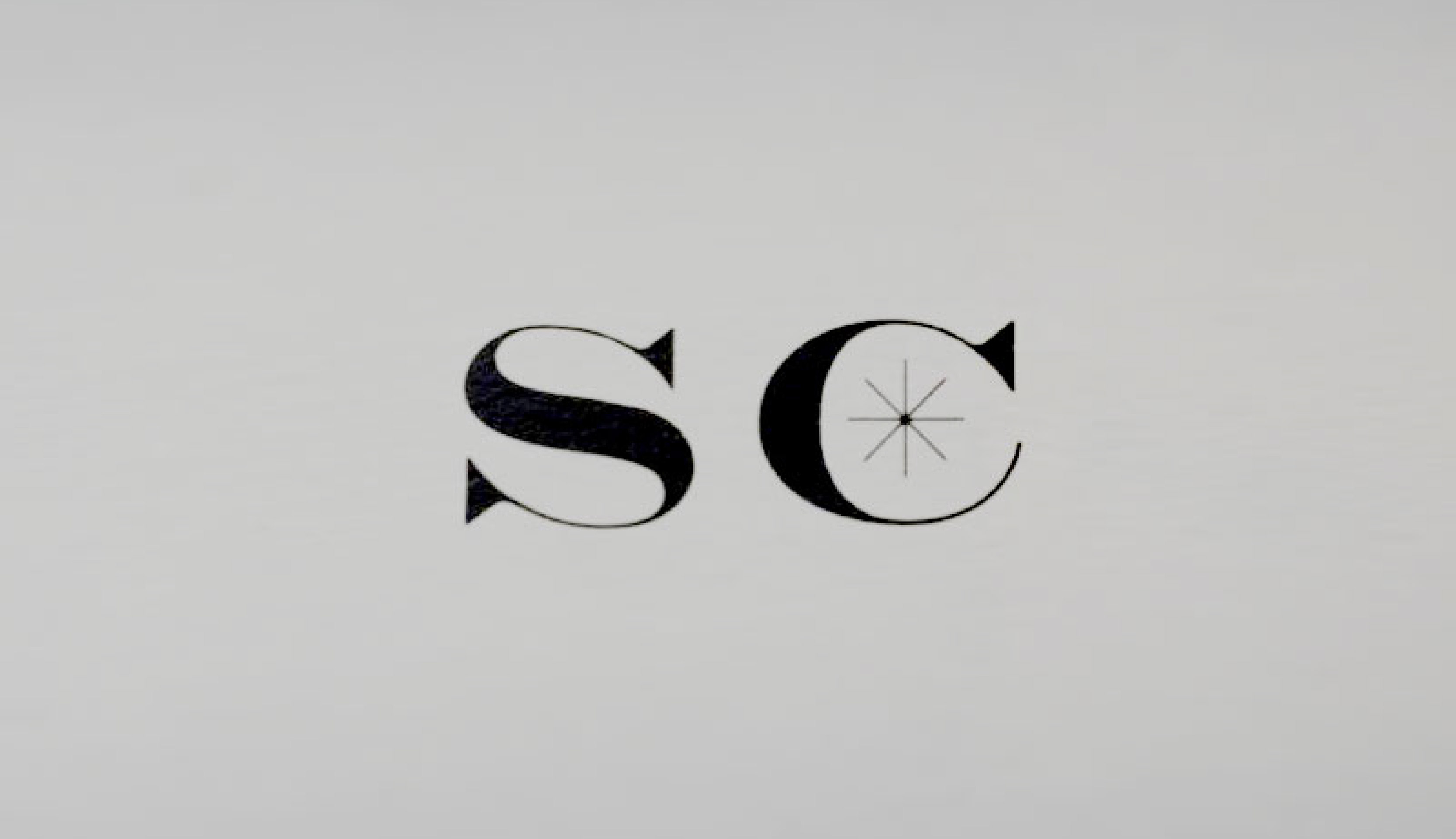
Logos Over the Years: The University seal was used for official publications and stationary until the 1960s when it was replaced by the first logo, an SC icon which was used until the 1970s.
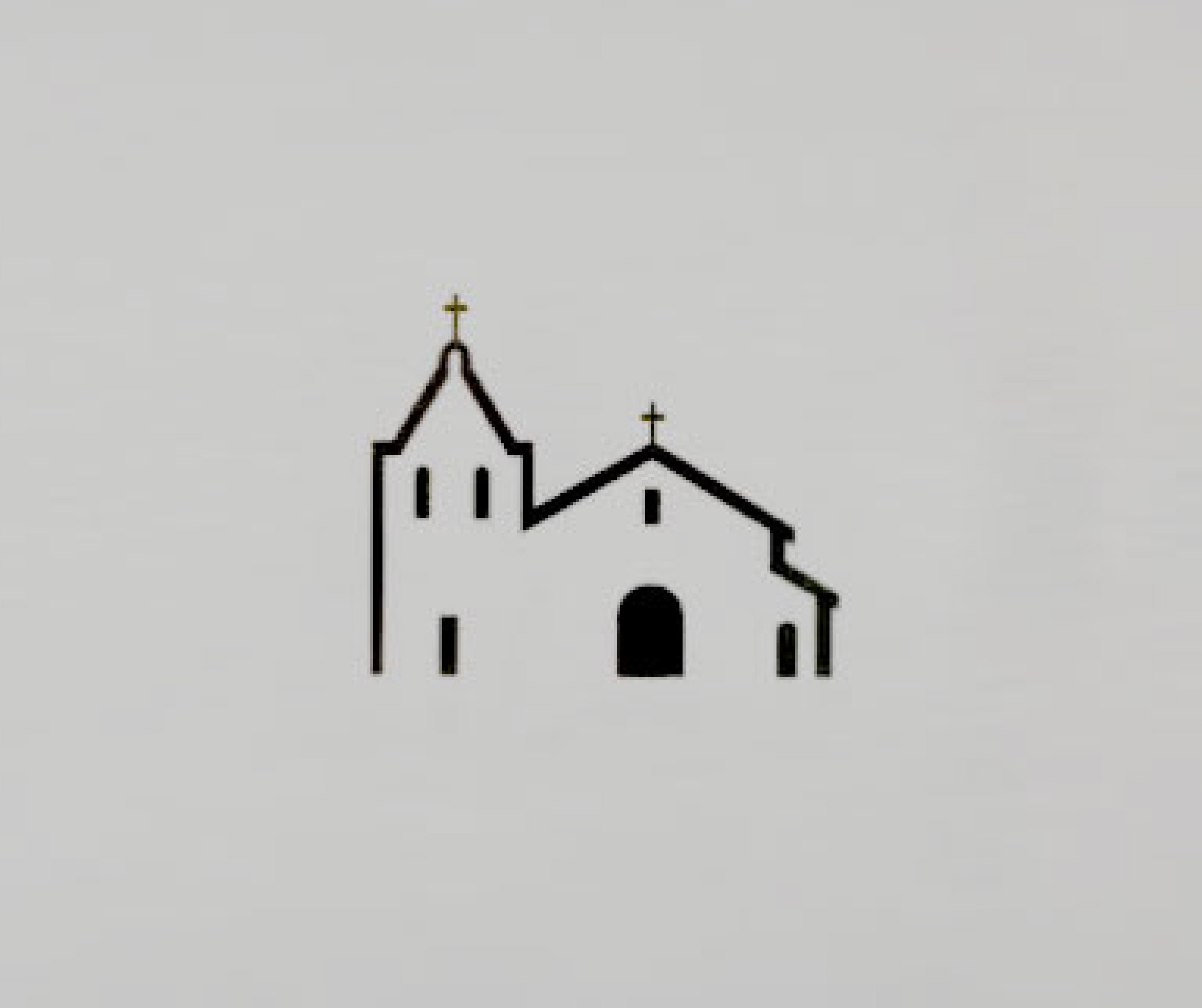
While it appeared in early illustrations to informally represent Santa Clara, the Mission Church first emerged as the official University mark in the 1980s in this line art design.
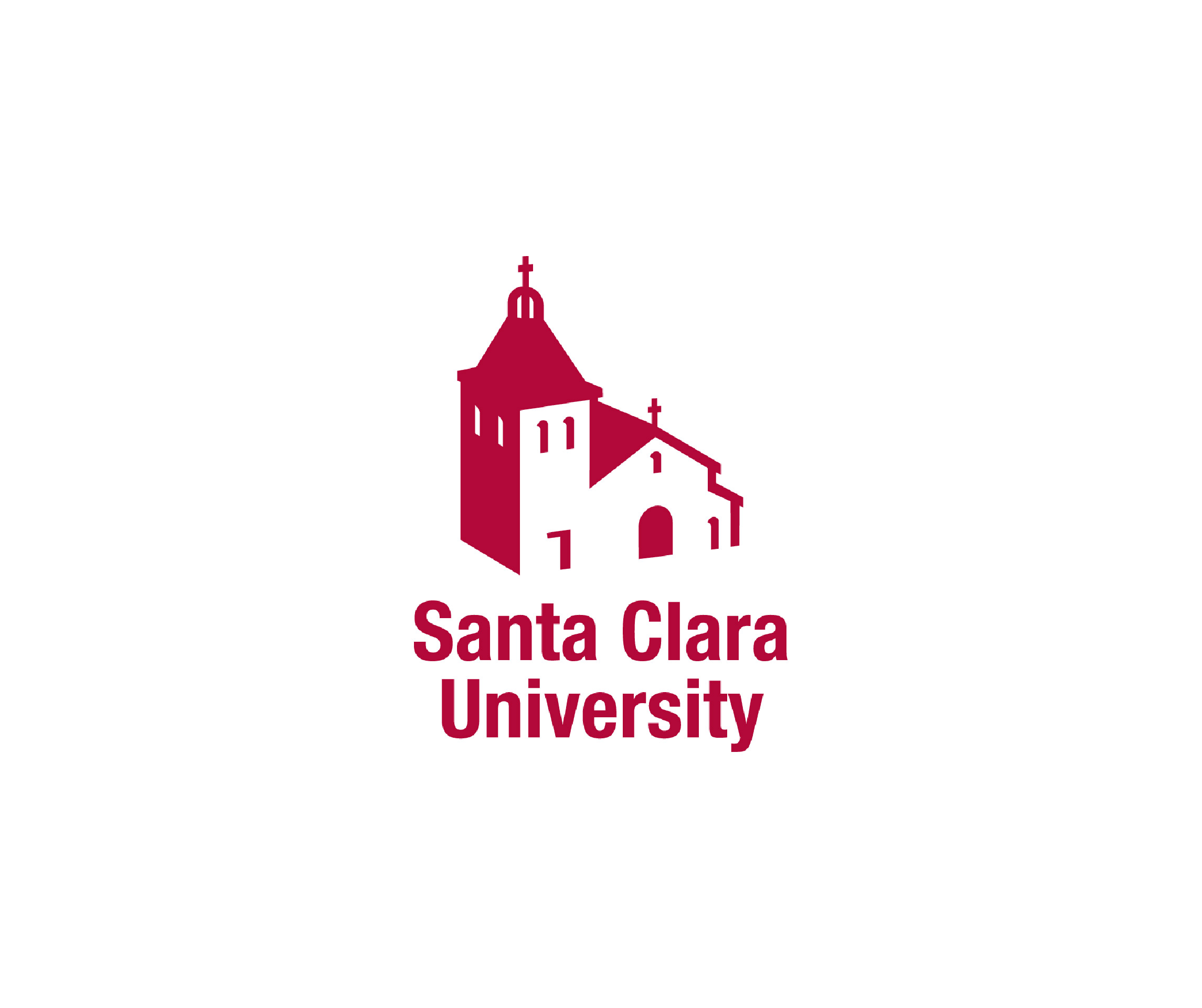
In the early 2000s, this logo introduced a top-down view of the Mission Church.
Today, Santa Clara’s perspective shifts upward. The revitalized Mission Church logo more accurately reflects the size of the church and the warm feeling of being on campus.
Some key changes:
- Shifting the perspective so the viewer is looking up at the Mission instead of down at a small icon to more accurately reflect its importance and size.
- Brightening the logo by adding a sunrise yellow behind the Mission—creating a feeling of warmth, optimism, and aspiration. This sunrise yellow will only be used for this academics mark—not athletics—with red remaining the dominant color in all University branding.
- Stepping the building into the foreground and placing it on the horizon line to establish a sense of place and dimension.
- Adding a collegiate shield and the year of Santa Clara’s founding in 1851, emphasizing that Santa Clara is a Jesuit university with the distinct heritage of being California’s first university.
“The shift in perspective was the most significant improvement. Santa Clara University has stature and significance, and the past Mission logo was not representing it in the best way.”
Ben Kuyper, Lead Designer, Jerry Kuyper Partners
While this revitalized Mission logo will not be used for athletics and will not replace the seal for approved formal or ceremonial uses, it will become the central visual element to help address the University’s brand diffusion problem, where over the years, different campus divisions and programs have deviated from using the main Santa Clara University academic mark.
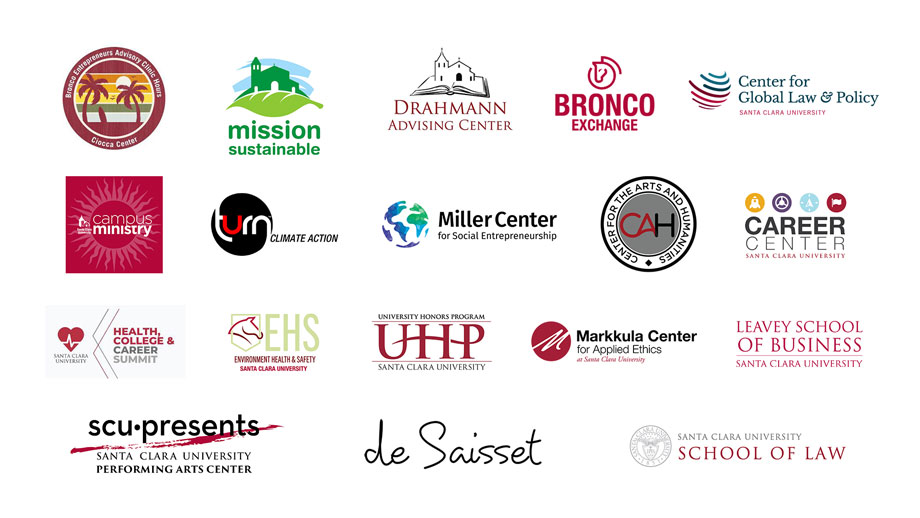
While many of these logos are well-designed, without clear alignment with the central Santa Clara University brand, campus units miss out on the collective benefits of leveraging Santa Clara’s larger reputation and recognition. Similarly, the University misses out on the reputational equity built by the great work of these units in their various fields.
“This new, unified visual identity does a great job moving our brand forward while respecting our history,” says Weiner. “JKP had the senior expertise and ability to listen to and translate campus feedback efficiently and effectively to get us where we needed to go.”
A university that serves society
When Andy Currie, group creative director of Decoded Advertising, met with members of the Santa Clara community during campus visits hosted by UMC, one idea kept coming up over and over again.
“Everybody described Santa Clara as having this secret sauce,” Currie says, “and our task was to help put a finger on the ingredients.”
With the help of extensive surveys and focus groups performed by Whitman Insights (WINS), Currie learned that the value of a Santa Clara education wasn’t just the degree or the services provided, but the ethical footprint the university carved out in the world.
(Read more about the data behind this work)
“We found that what made Santa Clara special was having this enormous heart, caring about people as a community, and equipping them with the ability to think critically, to apply ethical standards," Currie says.
This insight was the inspiration for Santa Clara University’s new brand manifesto, “What the World Needs.” This manifesto—as read below by Professor Emeritus Francisco Jimenez—was written by Decoded as the foundation for the brand platform, reframing how the University tells its stories.
In surveys conducted by WINS, the manifesto elicited strong, positive emotions, and the words “value” and “pride” were frequently mentioned across audiences.
From the manifesto, UMC worked with Decoded to develop a brand platform that functions as a larger framework for messaging across Santa Clara to highlight the people it serves through the tangible real-world solutions Broncos provide.
“What the world needs is going to change from day to day, decade to decade,” Currie explains. “It’s a point of view that says we will continue to look for these opportunities and push. We’re going to put people out into the world who are going to do something about it.”
Many elements of the brand platform will look familiar. For example, the University’s mission of creating a more humane, just, and sustainable world serves as the “brand vision.” Santa Clara’s three C’s—competence, conscience, and compassion—also serve as brand pillars, with a fourth C of community added to reflect the strength of the connection the University’s students and alumni feel toward their Bronco family, a quality that research showed was important to Gen Z. Collectively, the brand vision, positioning, pillars, and personality will shape University messaging under this new brand platform.

Brand Vision
Why we exist
Santa Clara University cultivates knowledge and purpose to build a more humane, just, and sustainable world.

Brand Positioning
What we offer
By educating the whole person, Santa Clara helps tomorrow’s leaders find not just their vision, but their voice and values. Above all, we are rising to the occasion, answering the call of what the world needs.

Brand Pillars
What themes define the stories we tell
Competence
By educating the whole student, SCU equips tomorrow’s leaders with the competence to solve difficult problems.
Conscience
By asking tough ethical questions, SCU is guided by conscience and is in constant pursuit of doing the right thing.
Compassion
By practicing radical compassion, SCU has an unwavering commitment to creating positive impact on the world.
Community
By embracing our shared humanity, SCU connects its community to each other and a life of purpose.

Personality
How we show up
We define ourselves through soaring innovation, while being rooted in humanity. Our tone is optimistic, yet pragmatic, while maintaining humility and a big heart.

Brand Platform
The vision, positioning, pillars, and personality come together to create a clear and consistent brand platform.
The story we tell future Broncos
Progress Needs People…
People Need Purpose…
Purpose Needs You…
With “What the World Needs” established as the University’s brand positioning, UMC, the Division of Enrollment Management, and Decoded developed a new, data-backed enrollment campaign called “Progress Needs People.” The campaign aligns Santa Clara’s institutional positioning “What the World Needs” with focus group-tested messaging geared to support undergraduate recruitment efforts.
The timing for a new enrollment campaign couldn’t be better, says Vice President for Enrollment Management Eva Blanco Masias. In recent years, higher education institutions across the U.S. have faced a host of challenges including fewer applicants, academic gaps and mental health struggles due to the pandemic, and a growing perception that college is too expensive or not worth it.
Addressing these higher ed challenges and speaking to the issues that matter most to prospective students, “Progress Needs People” is an enrollment campaign deeply connected with Santa Clara’s purpose-driven mission and strengths as an institution.
The campaign highlights several of Santa Clara’s strengths, such as its location within Silicon Valley, interdisciplinary offerings, and the Sobrato Campus for Discovery and Innovation—the University's newest STEM facility and the largest on the West Coast. But, while Santa Clara has the classrooms, labs, and resources to shape competent leaders, the campus cannot reach its full potential without its people.
“Progress doesn’t need machines. It doesn’t need technical skill sets. Progress needs people who are going to bring conscience and heart to whatever they’re passionate about, whether it’s AI or machine learning,” says Currie.
“In a world that sometimes seems so dark, polarized, and riddled with challenges, this campaign is about giving students hope and speaks to their aspirations and the many possibilities for the future.”
Eva Blanco Masias
This optimistic message resonated with prospective students across demographics, which Masias says is also crucial to supporting Santa Clara’s goal of recruiting more Hispanic, first-generation, and Pell Grant-eligible students.
Applying the findings from the WINS research, UMC has created a campaign that zeroes in on the pillar of “competence” through stories featuring young alumni who are creating solutions to real problems in the world. With that in mind, the first two stories in this campaign feature Sam Bertram ’16, M.S. ’18 and Mirelle Raza ’15 who are making a direct impact on food insecurity and law, respectively.

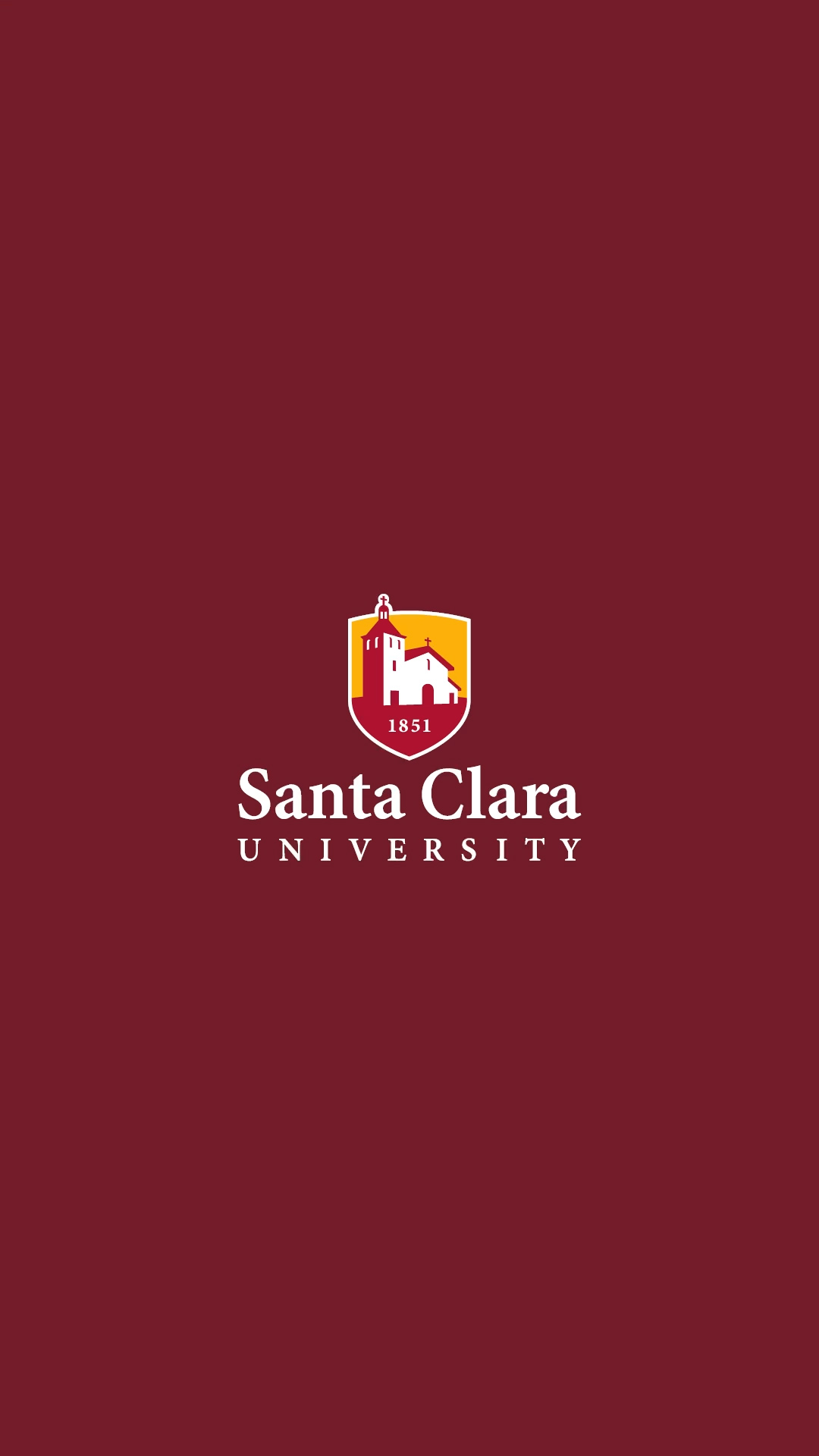

By showing what success after Santa Clara looks like, Lokman and the rest of the team at UMC are excited to reach a wider audience and inspire the next generation of Bronco leaders.
“Our community is doing incredible things, so let’s showcase this—together,” says Lokman.
Epilogue: The data behind the creative
Data matters and it was at the heart of each step of this rebrand. These projects would not have been possible without the Bronco community, so it was important to show the critical role that students, faculty, staff, and alumni played in shaping these initiatives.
Partnering with Whitman Insights (WINS), UMC conducted a two-phase research process using both qualitative and quantitative methods. To put it simply, the goal of this research was to identify what Santa Clara does well and what information matters to the people who matter.
Phase one established baseline measures of reputation with key audiences, identifying the perceived strengths and weaknesses as well as Santa Clara’s place in the higher-ed landscape. UMC conducted 10 on-campus focus groups, 42 interviews with key stakeholders, and a survey with responses from 2,142 undergrad and grad students, faculty, staff, alumni, and prospective students and parents.
What did UMC learn?
First, Santa Clara starts from an excellent place. Both the Bronco community and prospective students and families hold SCU in high regard, with four areas emerging as key components:
- Jesuit Education: Jesuit principles remain the beating heart of SCU. These values guide how the University approaches education, from the teacher-scholar model to interdisciplinary curriculum. The Jesuit tradition is alive and well, indeed.
- Positive Impact: Santa Clara champions solutions for a world in need. Its stakeholders are proud of the institution’s unwillingness to sacrifice community and ethics for the sake of profits. Santa Clara is committed to making the right choices, no matter how hard.
- Location: Being based in California and having a beautiful campus creates an enjoyable, sunny experience, reflective of Broncos’ optimism. Plus, being in the heart of Silicon Valley presents huge opportunities for students and alumni.
- Lifelong Community: The Bronco community creates lifelong bonds; a byproduct of an 11:1 student-to-faculty ratio, no-wrong-door policies, supportive faculty, and a thriving student body that rallies together through sports, clubs, and causes.
Notably, most testing groups believed that Santa Clara is headed in the right direction—and at more than double the rates of their views of higher education overall.
With that good news, there were some areas for improvement. While the majority of the Santa Clara community and prospective students generally felt the school was increasingly diverse, there was room to highlight diversity in terms of sexual orientation, socioeconomic status, and disability.
With these and many other insights, Decoded developed a series of different brand positioning options—including the “What the World Needs” manifesto, power facts, and storytelling executions for awareness and enrollment campaigns.
In Phase 2, WINS and UMC tested these options across different audiences and demographics via surveys and focus groups. A total of 2,127 undergrad and grad students, faculty, staff, alumni, and prospective students and parents responded to these surveys.
In addition to refining the “What the World Needs” brand platform and concepts for an enrollment campaign, UMC learned that stories of competence and real-world impact by Santa Clara alumni scored highly across all audiences. Meanwhile, prospective students expressed some initial confusion about how Santa Clara’s values connected to a Jesuit education—an insight that provides an opportunity to bring Jesuit ideals to life through stories of alumni living out the University’s mission through their work.
Finally, a list of 33 facts about Santa Clara was tested to see which ones were viewed as the most or least impactful. The top-performing power facts—some of which are listed below—will be integral to strategically communicating the differentiators that matter.
Student-to-faculty ratio
First-year retention rate, one of the highest in the nation
National universities by U.S. News & World Report
Ranked nationwide for undergraduate teaching
Ranked nationally for average salaries 10 years after graduation
With these data-backed messaging and facts in hand, UMC will be able to execute stronger strategic marketing campaigns to advance Santa Clara University’s new brand and institutional goals.